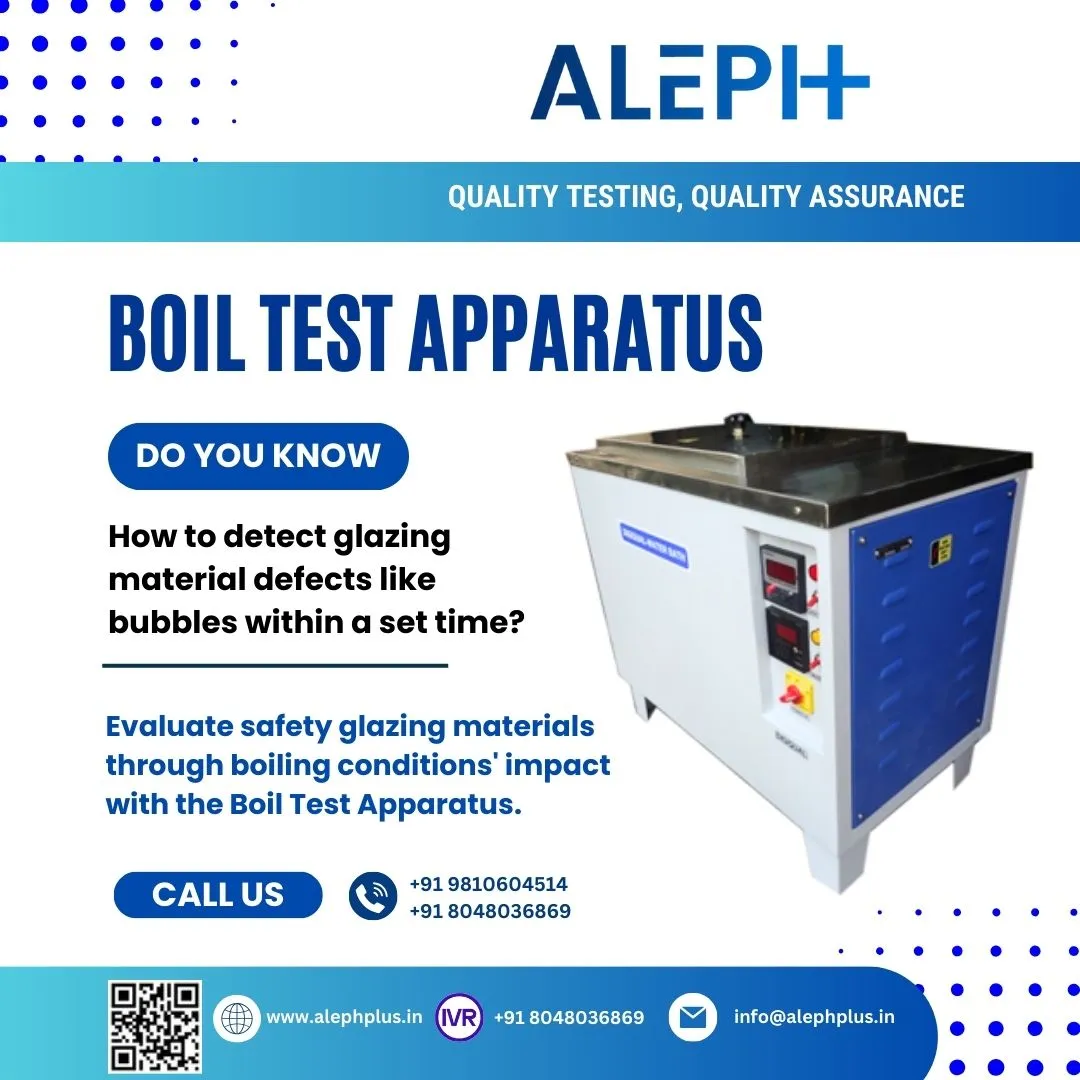
Boil Test Apparatus to test Defects in Glazing Materials
In the intricate world of safety glazing materials, ensuring optimal quality and resilience is paramount. One of the key tools in this pursuit is the Boil Test Apparatus, a sophisticated instrument designed to detect defects and assess the endurance of glazing materials under extreme conditions. In this exploration, we delve into the significance, functionality, and applications of the Boil Test Apparatus in evaluating safety glazing materials.
Understanding the Boil Test Apparatus:
Essence of Safety in Glass:
The Boil Test Apparatus plays a pivotal role in determining the safety and durability of glazing materials, especially glass. Safety glazing materials are expected to withstand various challenges, and the Boil Test provides a simulated environment to evaluate their performance.
Detection of Defects:
One of the primary objectives of the Boil Test is to detect defects, particularly bubbles, within a set time. Bubbles in glass can compromise its structural integrity and safety, making it crucial to identify and address such imperfections. The test subjects the glazing material to boiling conditions, mimicking the impact of extreme temperature changes that might occur in real-world scenarios.
Testing Procedure:
The testing procedure involves placing the glazing material in the Boil Test Apparatus and exposing it to boiling conditions for a specified duration. This rigorous process helps assess how well the material retains its structural integrity and identifies any defects that could compromise safety.
Applications of Boil Test Apparatus Across Industries:
1. Construction and Architecture: Ensuring the safety and durability of glass used in windows, doors, and facades.
2. Automotive Industry: Evaluating the safety glazing materials used in vehicle windows and windshields.
3. Consumer Products: Assessing the quality of glass used in household items like cookware and appliances.
Advancing Safety and Quality:
The Boil Test Apparatus emerges as a critical tool in the quest for safety and quality in glazing materials. By subjecting materials to boiling conditions, manufacturers can proactively identify and rectify defects, contributing to the production of safety glazing materials that meet the highest standards of durability and reliability.
